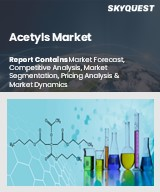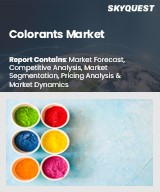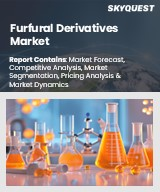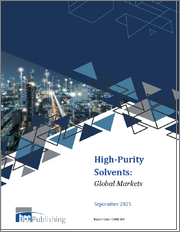
|
시장보고서
상품코드
1578972
세계의 이산화탄소 포집용 용제 시장 : 용제 유형별, 상 유형별, 분야별, 용도별, 최종 사용자별-예측(2025-2030년)Solvents for Carbon Dioxide Capture Market by Solvent Type (Amine Blends, Amines, Carbonates), Phase Type (Liquid Solvents, Solid Solvents), Sector, Application, End-User - Global Forecast 2025-2030 |
||||||
이산화탄소 포집용 용제 시장의 2023년 시장 규모는 2억 4,719만 달러로 평가되었고, 2024년에는 2억 5,962만 달러로 추정되며, CAGR 5.62%로 성장할 전망이고, 2030년에는 3억 6,253만 달러에 도달할 것으로 예상됩니다.
이산화탄소 포집에 사용되는 용제 시장은 산업 배출물에서 이산화탄소를 회수하는 효율과 환경에 미치는 영향을 개선하는 기술의 발전에 초점을 맞추었습니다. 이러한 용제의 필요성은 이산화탄소 배출량 감소와 기후 변화와의 싸움을 목표로 하는 세계 정책과 산업계가 규제 기준을 준수할 필요성에 기인합니다. 이러한 용제는 주로 탄소 포집 및 저장(CCS) 기술에 응용되어 발전, 석유 및 가스, 공업 제조 등 다양한 분야에서 이용되고 있습니다. 주요 시장 성장 요인으로는 지속 가능한 기술에 대한 투자 증가, 이산화탄소 배출량 감소를 요구하는 규제 추진, 보다 높은 흡수율과 안정성을 제공하는 용제 배합의 발전 등이 있습니다. 다양한 조건 하에서 효과적으로 작동하는 고효율, 저에너지 용매의 개발 및 녹색기술의 촉진을 목적으로 한 정부의 장려책의 활용에 기회가 있습니다. 새로운 용제 기술을 혁신하고 규모를 확대하기 위한 학계와 산업계의 파트너십도 필수적입니다. 그러나 시장은 높은 초기 자본 비용, 기술의 복잡성, 용제 폐기로 인한 환경에 대한 잠재적 영향과 같은 과제에 직면하고 있습니다. 또한, 화석 연료 가격의 변동은 CCS 프로젝트의 경제적 매력에 영향을 미칠 수 있습니다. 기술 혁신이 요구되는 분야에는 바이오 베이스나 나노 재료의 용제 개발이 있어, 환경 부하의 저감과 성능의 향상을 기대할 수 있습니다. 용제 재생 방법을 조사하고 용제 배포를 최적화하기위한 AI 통합은 성장에 대한 유망한 경로를 보여줍니다. 시장의 성격은 경쟁적이고 급속하게 진화하고 있으며, 혁신 중심의 진보 가능성이 큽니다. 규제 동향과 자사의 전략을 일치시키고 최첨단 연구에 투자할 수 있는 기업은 이 변혁 분야에서 주도권을 잡을 수 있을 것으로 보입니다.
| 주요 시장 통계 | |
|---|---|
| 기준년(2023) | 2억 4,719만 달러 |
| 예측년(2024) | 2억 5,962만 달러 |
| 예측년(2030) | 3억 6,253만 달러 |
| CAGR(%) | 5.62% |
시장 역학 : 급속히 진화하는 이산화탄소 포집용 용제 시장의 주요 시장 인사이트 공개
이산화탄소 포집용 용제 시장은 수요 및 공급의 역동적인 상호작용에 의해 변모하고 있습니다. 이러한 시장 역학의 진화를 이해함으로써 기업은 충분한 정보를 바탕으로 투자결정, 전략적 의사결정, 새로운 비즈니스 기회를 획득할 수 있습니다. 이러한 동향을 종합적으로 파악함으로써 기업은 정치적, 지리적, 기술적, 사회적, 경제적 영역에 걸친 다양한 리스크를 경감할 수 있을 뿐만 아니라, 소비자 행동과 그것이 제조 비용 또는 구매 동향에 미치는 영향을 보다 명확하게 이해할 수 있습니다.
- 시장 성장 촉진요인
- 탄소 배출 감축 이니셔티브와 탄소 포집 기술에 대한 정부 규제와 인센티브 증가
- 이산화탄소 포집 공정의 효율과 유효성을 높이는 용제 기술의 진보
- 산업 공정 및 에너지 생산에 있어서 지속가능하고 환경친화적인 솔루션에 대한 인식과 수요 증가
- 혁신적인 이산화탄소 포집 및 저장 솔루션을 위한 연구개발 투자 증가
- 시장 성장 억제요인
- 용제의 재생에 필요한 에너지가 높기 때문에 산업용 분야에서의 보급 저해
- 고성능 용매의 가용성이 제한되고 비용이 높기 때문에 이산화탄소 포집 기술에서의 사용이 제한됩니다.
- 시장 기회
- 특정의 이산화탄소 포집 기술에 맞춘 혁신적인 용제 배합 시장 가능성의 조사
- 용제 기반 이산화탄소 포집 솔루션의 기술 혁신을 추진하기 위한 연구 기관과의 파트너십 개발
- 규제 정책과 산업 활동의 영향을 받은 지역 고유 시장 기회의 평가
- 시장의 과제
- 이산화탄소 포집용 용제 기술과 관련된 높은 에너지 비용과 효율성의 과제
- 이산화탄소 포집용 용제에 영향을 주는 환경과 규제 준수의 문제
Portre's Five Forces : 이산화탄소 포집용 용제 시장을 탐색하는 전략 도구
Porter's Five Forces 프레임 워크는 시장 상황경쟁 구도를 이해하는 중요한 도구입니다. Porter's Five Forces 프레임 워크는 기업의 경쟁력을 평가하고 전략적 기회를 탐구하는 명확한 기술을 제공합니다. 이 프레임 워크는 기업이 시장 내 세력도를 평가하고 신규 사업의 수익성을 결정하는 데 도움이 됩니다. 이러한 인사이트를 통해 기업은 자사의 강점을 활용하고, 약점을 해결하고, 잠재적인 과제를 피할 수 있으며, 보다 강인한 시장에서의 포지셔닝을 보장할 수 있습니다.
PESTLE 분석 : 이산화탄소 포집용 용제 시장에서 외부로부터의 영향 파악
외부 거시환경 요인은 이산화탄소 포집용 용제 시장의 성과 역학을 형성하는데 매우 중요한 역할을 합니다. 정치적, 경제적, 사회적, 기술적, 법적, 환경적 요인 분석은 이러한 영향을 탐색하는 데 필요한 정보를 제공합니다. PESTLE 요인을 조사함으로써 기업은 잠재적인 위험과 기회를 더 잘 이해할 수 있습니다. 이 분석을 통해 기업은 규제, 소비자 선호, 경제 동향의 변화를 예측하고 앞으로 예상되는 적극적인 의사 결정을 할 준비를 할 수 있습니다.
시장 점유율 분석 : 이산화탄소 포집용 용제 시장에서 경쟁 구도 파악
이산화탄소 포집용 용제 시장의 상세한 시장 점유율 분석을 통해 공급업체의 성과를 종합적으로 평가할 수 있습니다. 기업은 수익, 고객 기반, 성장률 등 주요 지표를 비교하여 경쟁 포지셔닝을 밝힐 수 있습니다. 이 분석을 통해 시장 집중, 단편화, 통합 동향을 밝혀내고 벤더들은 경쟁이 치열해지는 가운데 자사의 지위를 높이는 전략적 의사 결정을 내리는 데 필요한 지식을 얻을 수 있습니다.
FPNV 포지셔닝 매트릭스 : 이산화탄소 포집용 용제 시장에서 공급업체의 성능 평가
FPNV 포지셔닝 매트릭스는 이산화탄소 포집용 용제 시장에서 공급업체를 평가하는 중요한 도구입니다. 이 행렬을 통해 비즈니스 조직은 공급업체의 비즈니스 전략과 제품 만족도를 기준으로 평가하여 목표에 맞는 충분한 정보를 바탕으로 의사 결정을 내릴 수 있습니다. 네 가지 사분면을 통해 공급업체를 명확하고 정확하게 세분화하여 전략 목표에 가장 적합한 파트너 및 솔루션을 파악할 수 있습니다.
전략 분석 및 추천 : 이산화탄소 포집용 용제 시장에서 성공을 위한 길 그리기
이산화탄소 포집용 용제 시장의 전략적 분석은 세계 시장에서의 프레즌스 강화를 목표로 하는 기업에 필수적입니다. 주요 자원, 능력 및 성과 지표를 검토함으로써 기업은 성장 기회를 파악하고 개선을 위해 노력할 수 있습니다. 이러한 접근 방식을 통해 경쟁 구도에서 과제를 극복하고 새로운 비즈니스 기회를 활용하여 장기적인 성공을 거둘 수 있는 체제를 구축할 수 있습니다.
이 보고서는 주요 관심 분야를 포괄하는 시장의 종합적인 분석을 제공합니다.
1. 시장 침투 : 현재 시장 환경의 상세한 검토, 주요 기업의 광범위한 데이터, 시장 도달범위 및 전반적인 영향력을 평가합니다.
2. 시장 개척도 : 신흥 시장의 성장 기회를 파악하고 기존 분야의 확장 가능성을 평가하며 미래 성장을 위한 전략적 로드맵을 제공합니다.
3. 시장 다양화 : 최근 제품 출시, 미개척 지역, 업계의 주요 진보, 시장을 형성하는 전략적 투자를 분석합니다.
4. 경쟁 평가 및 정보 : 경쟁 구도를 철저히 분석하여 시장 점유율, 사업 전략, 제품 포트폴리오, 인증, 규제 당국 승인, 특허 동향, 주요 기업의 기술 진보 등을 검증합니다.
5. 제품 개발 및 혁신 : 미래 시장 성장을 가속할 것으로 예상되는 최첨단 기술, 연구개발 활동, 제품 혁신을 강조합니다.
또한 이해관계자가 충분한 정보를 얻고 의사결정을 할 수 있도록 중요한 질문에 대답하고 있습니다.
1. 현재 시장 규모 및 향후 성장 예측은?
2. 최고의 투자 기회를 제공하는 제품, 부문 및 지역은 어디입니까?
3. 시장을 형성하는 주요 기술 동향 및 규제의 영향은?
4. 주요 벤더의 시장 점유율 및 경쟁 포지션은?
5. 벤더 시장 진입 및 철수 전략의 원동력이 되는 수익원과 전략적 기회는 무엇인가?
목차
제1장 서문
제2장 조사 방법
제3장 주요 요약
제4장 시장 개요
제5장 시장 인사이트
- 시장 역학
- 성장 촉진요인
- 탄소 배출 감축 노력과 탄소 포집 기술에 대한 정부의 규제와 인센티브 강화
- 이산화탄소 포집 공정의 효율과 유효성을 높이는 용제 기술의 진보
- 산업 공정과 에너지 생산에 있어서 지속가능하고 환경친화적인 솔루션에 대한 의식과 수요 증가
- 혁신적인 탄소 포집 및 저장 솔루션의 연구개발에 대한 투자 증가
- 성장 억제요인
- 용제 재생에는 높은 에너지가 필요하기 때문에 산업용 용도 분야에서 용제의 광범위한 채용 방해
- 고성능 용제의 입수 제한 및 고비용으로 이산화탄소 포집 기술에서의 사용 제한
- 기회
- 특정 탄소 포집 기술에 맞춘 혁신적인 용제 배합 시장 가능성 조사
- 연구기관과의 파트너십을 구축하고, 용제 기반 탄소 포집 솔루션의 혁신 추진
- 규제 정책이나 산업 활동의 영향을 받는 지역 고유 시장 기회의 평가
- 과제
- 이산화탄소 포집용 용제 기술과 관련된 높은 에너지 비용과 효율성의 과제
- 이산화탄소 포집용 용제에 영향을 미치는 환경 및 규제 준수의 문제
- 성장 촉진요인
- 시장 세분화 분석
- Porter's Five Forces 분석
- PESTEL 분석
- 정치적
- 경제
- 사교
- 기술적
- 법률상
- 환경
제6장 이산화탄소 포집용 용제 시장 : 용제 유형별
- 아민 블렌드
- 아민
- 1급 아민
- 2급 아민
- 제3급 아민
- 탄산염
- 이온 액체
제7장 이산화탄소 포집용 용제 시장 : 페이즈 유형별
- 액체 용매
- 고체 용매
제8장 이산화탄소 포집용 용제 시장 : 분야별
- 화학제품 제조
- 공업 프로세스
- 석유 및 가스
- 발전
제9장 이산화탄소 포집용 용제 시장 : 용도별
- 산소 연소
- 연소 후 포집
- 배기가스 치료
- 산업 배출물 치료
- 연소 전 포집
제10장 이산화탄소 포집용 용제 시장 : 최종 사용자별
- 화학회사
- 에너지 및 유틸리티
- 제조업
- 석유 및 가스회사
제11장 아메리카의 이산화탄소 포집용 용제 시장
- 아르헨티나
- 브라질
- 캐나다
- 멕시코
- 미국
제12장 아시아태평양의 이산화탄소 포집용 용제 시장
- 호주
- 중국
- 인도
- 인도네시아
- 일본
- 말레이시아
- 필리핀
- 싱가포르
- 한국
- 대만
- 태국
- 베트남
제13장 유럽, 중동 및 아프리카의 이산화탄소 포집용 용제 시장
- 덴마크
- 이집트
- 핀란드
- 프랑스
- 독일
- 이스라엘
- 이탈리아
- 네덜란드
- 나이지리아
- 노르웨이
- 폴란드
- 카타르
- 러시아
- 사우디아라비아
- 남아프리카
- 스페인
- 스웨덴
- 스위스
- 터키
- 아랍에미리트(UAE)
- 영국
제14장 경쟁 구도
- 시장 점유율 분석(2023년)
- FPNV 포지셔닝 매트릭스(2023년)
- 경쟁 시나리오 분석
- 전략 분석 및 제안
기업 목록
- Air Products and Chemicals Inc
- AkzoNobel NV
- Arkema SA
- Asahi Glass Company
- BASF SE
- Brenntag AG
- Clariant AG
- Dow Chemical Company
- Eastman Chemical Company
- Evonik Industries
- Huntsman Corporation
- IMCD Group
- Ineos Group
- LG Chemical
- Linde plc
- Mitsubishi Chemical Corporation
- Royal Dutch Shell plc
- SABIC
- Solvay SA
- Tosoh Corporation
The Solvents for Carbon Dioxide Capture Market was valued at USD 247.19 million in 2023, expected to reach USD 259.62 million in 2024, and is projected to grow at a CAGR of 5.62%, to USD 362.53 million by 2030.
The market for solvents used in carbon dioxide capture is focused on advancing technologies to improve the efficiency and environmental impact of capturing CO2 from industrial emissions. The necessity for these solvents is driven by global policies aiming to reduce carbon emissions and combat climate change, as well as the need for industries to comply with regulatory standards. These solvents are primarily applied in carbon capture and storage (CCS) technologies, which are utilized across various sectors including power generation, oil and gas, and industrial manufacturing. Key market growth factors include increasing investments in sustainable technologies, the regulatory push for lower carbon footprints, and advancements in solvent formulations that offer higher absorption rates and improved stability. Opportunities lie in developing highly efficient, low-energy solvents that can operate effectively under varied conditions, as well as leveraging government incentives aimed at promoting green technology. Partnerships between academia and industry to innovate and scale new solvent technologies are also vital. However, the market faces challenges such as high initial capital costs, technological complexity, and potential environmental impacts of solvent disposal. Additionally, the variability in fossil fuel prices can influence the economic attractiveness of CCS projects. Areas ripe for innovation include the development of bio-based and nano-material solvents, which offer the potential for reduced environmental impact and enhanced performance. Research into solvent regeneration methods and the integration of AI to optimize solvent deployment also present promising avenues for growth. The nature of the market is competitive and rapidly evolving, with significant potential for innovation-driven advances. Companies that can align their strategies with regulatory trends and invest in cutting-edge research will be positioned to lead in this transformative field.
| KEY MARKET STATISTICS | |
|---|---|
| Base Year [2023] | USD 247.19 million |
| Estimated Year [2024] | USD 259.62 million |
| Forecast Year [2030] | USD 362.53 million |
| CAGR (%) | 5.62% |
Market Dynamics: Unveiling Key Market Insights in the Rapidly Evolving Solvents for Carbon Dioxide Capture Market
The Solvents for Carbon Dioxide Capture Market is undergoing transformative changes driven by a dynamic interplay of supply and demand factors. Understanding these evolving market dynamics prepares business organizations to make informed investment decisions, refine strategic decisions, and seize new opportunities. By gaining a comprehensive view of these trends, business organizations can mitigate various risks across political, geographic, technical, social, and economic domains while also gaining a clearer understanding of consumer behavior and its impact on manufacturing costs and purchasing trends.
- Market Drivers
- Increasing governmental regulations and incentives for carbon emission reduction initiatives and carbon capture technologies
- Advancements in solvent technologies enhancing efficiency and effectiveness for carbon dioxide capture processes
- Rising awareness and demand for sustainable and eco-friendly solutions in industrial processes and energy production
- Growing investments in research and development for innovative carbon capture and storage solutions
- Market Restraints
- The high energy requirements for the regeneration of solvents hinder their widespread adoption in industrial applications
- Limited availability and high cost of high-performance solvents restrict their use in carbon dioxide capture technologies
- Market Opportunities
- Investigating market potential for innovative solvent formulations tailored for specific carbon capture technologies
- Developing partnerships with research institutions to drive innovation in solvent-based carbon capture solutions
- Assessment of region-specific market opportunities influenced by regulatory policies and industrial activities
- Market Challenges
- High energy costs and efficiency challenges associated with solvents for carbon dioxide capture technologies
- Environmental and regulatory compliance issues impacting solvents used for carbon dioxide capture
Porter's Five Forces: A Strategic Tool for Navigating the Solvents for Carbon Dioxide Capture Market
Porter's five forces framework is a critical tool for understanding the competitive landscape of the Solvents for Carbon Dioxide Capture Market. It offers business organizations with a clear methodology for evaluating their competitive positioning and exploring strategic opportunities. This framework helps businesses assess the power dynamics within the market and determine the profitability of new ventures. With these insights, business organizations can leverage their strengths, address weaknesses, and avoid potential challenges, ensuring a more resilient market positioning.
PESTLE Analysis: Navigating External Influences in the Solvents for Carbon Dioxide Capture Market
External macro-environmental factors play a pivotal role in shaping the performance dynamics of the Solvents for Carbon Dioxide Capture Market. Political, Economic, Social, Technological, Legal, and Environmental factors analysis provides the necessary information to navigate these influences. By examining PESTLE factors, businesses can better understand potential risks and opportunities. This analysis enables business organizations to anticipate changes in regulations, consumer preferences, and economic trends, ensuring they are prepared to make proactive, forward-thinking decisions.
Market Share Analysis: Understanding the Competitive Landscape in the Solvents for Carbon Dioxide Capture Market
A detailed market share analysis in the Solvents for Carbon Dioxide Capture Market provides a comprehensive assessment of vendors' performance. Companies can identify their competitive positioning by comparing key metrics, including revenue, customer base, and growth rates. This analysis highlights market concentration, fragmentation, and trends in consolidation, offering vendors the insights required to make strategic decisions that enhance their position in an increasingly competitive landscape.
FPNV Positioning Matrix: Evaluating Vendors' Performance in the Solvents for Carbon Dioxide Capture Market
The Forefront, Pathfinder, Niche, Vital (FPNV) Positioning Matrix is a critical tool for evaluating vendors within the Solvents for Carbon Dioxide Capture Market. This matrix enables business organizations to make well-informed decisions that align with their goals by assessing vendors based on their business strategy and product satisfaction. The four quadrants provide a clear and precise segmentation of vendors, helping users identify the right partners and solutions that best fit their strategic objectives.
Strategy Analysis & Recommendation: Charting a Path to Success in the Solvents for Carbon Dioxide Capture Market
A strategic analysis of the Solvents for Carbon Dioxide Capture Market is essential for businesses looking to strengthen their global market presence. By reviewing key resources, capabilities, and performance indicators, business organizations can identify growth opportunities and work toward improvement. This approach helps businesses navigate challenges in the competitive landscape and ensures they are well-positioned to capitalize on newer opportunities and drive long-term success.
Key Company Profiles
The report delves into recent significant developments in the Solvents for Carbon Dioxide Capture Market, highlighting leading vendors and their innovative profiles. These include Air Products and Chemicals Inc, AkzoNobel N.V., Arkema S.A., Asahi Glass Company, BASF SE, Brenntag AG, Clariant AG, Dow Chemical Company, Eastman Chemical Company, Evonik Industries, Huntsman Corporation, IMCD Group, Ineos Group, LG Chemical, Linde plc, Mitsubishi Chemical Corporation, Royal Dutch Shell plc, SABIC, Solvay S.A., and Tosoh Corporation.
Market Segmentation & Coverage
This research report categorizes the Solvents for Carbon Dioxide Capture Market to forecast the revenues and analyze trends in each of the following sub-markets:
- Based on Solvent Type, market is studied across Amine Blends, Amines, Carbonates, and Ionic Liquids. The Amines is further studied across Primary Amines, Secondary Amines, and Tertiary Amines.
- Based on Phase Type, market is studied across Liquid Solvents and Solid Solvents.
- Based on Sector, market is studied across Chemical Production, Industrial Processes, Oil & Gas, and Power Generation.
- Based on Application, market is studied across Oxy-Fuel Combustion, Post-Combustion Capture, and Pre-Combustion Capture. The Post-Combustion Capture is further studied across Flue Gas Treatment and Industrial Emissions Treatment.
- Based on End-User, market is studied across Chemical Companies, Energy and Utilities, Manufacturing Industries, and Oil and Gas Companies.
- Based on Region, market is studied across Americas, Asia-Pacific, and Europe, Middle East & Africa. The Americas is further studied across Argentina, Brazil, Canada, Mexico, and United States. The United States is further studied across California, Florida, Illinois, New York, Ohio, Pennsylvania, and Texas. The Asia-Pacific is further studied across Australia, China, India, Indonesia, Japan, Malaysia, Philippines, Singapore, South Korea, Taiwan, Thailand, and Vietnam. The Europe, Middle East & Africa is further studied across Denmark, Egypt, Finland, France, Germany, Israel, Italy, Netherlands, Nigeria, Norway, Poland, Qatar, Russia, Saudi Arabia, South Africa, Spain, Sweden, Switzerland, Turkey, United Arab Emirates, and United Kingdom.
The report offers a comprehensive analysis of the market, covering key focus areas:
1. Market Penetration: A detailed review of the current market environment, including extensive data from top industry players, evaluating their market reach and overall influence.
2. Market Development: Identifies growth opportunities in emerging markets and assesses expansion potential in established sectors, providing a strategic roadmap for future growth.
3. Market Diversification: Analyzes recent product launches, untapped geographic regions, major industry advancements, and strategic investments reshaping the market.
4. Competitive Assessment & Intelligence: Provides a thorough analysis of the competitive landscape, examining market share, business strategies, product portfolios, certifications, regulatory approvals, patent trends, and technological advancements of key players.
5. Product Development & Innovation: Highlights cutting-edge technologies, R&D activities, and product innovations expected to drive future market growth.
The report also answers critical questions to aid stakeholders in making informed decisions:
1. What is the current market size, and what is the forecasted growth?
2. Which products, segments, and regions offer the best investment opportunities?
3. What are the key technology trends and regulatory influences shaping the market?
4. How do leading vendors rank in terms of market share and competitive positioning?
5. What revenue sources and strategic opportunities drive vendors' market entry or exit strategies?
Table of Contents
1. Preface
- 1.1. Objectives of the Study
- 1.2. Market Segmentation & Coverage
- 1.3. Years Considered for the Study
- 1.4. Currency & Pricing
- 1.5. Language
- 1.6. Stakeholders
2. Research Methodology
- 2.1. Define: Research Objective
- 2.2. Determine: Research Design
- 2.3. Prepare: Research Instrument
- 2.4. Collect: Data Source
- 2.5. Analyze: Data Interpretation
- 2.6. Formulate: Data Verification
- 2.7. Publish: Research Report
- 2.8. Repeat: Report Update
3. Executive Summary
4. Market Overview
5. Market Insights
- 5.1. Market Dynamics
- 5.1.1. Drivers
- 5.1.1.1. Increasing governmental regulations and incentives for carbon emission reduction initiatives and carbon capture technologies
- 5.1.1.2. Advancements in solvent technologies enhancing efficiency and effectiveness for carbon dioxide capture processes
- 5.1.1.3. Rising awareness and demand for sustainable and eco-friendly solutions in industrial processes and energy production
- 5.1.1.4. Growing investments in research and development for innovative carbon capture and storage solutions
- 5.1.2. Restraints
- 5.1.2.1. The high energy requirements for the regeneration of solvents hinder their widespread adoption in industrial applications
- 5.1.2.2. Limited availability and high cost of high-performance solvents restrict their use in carbon dioxide capture technologies
- 5.1.3. Opportunities
- 5.1.3.1. Investigating market potential for innovative solvent formulations tailored for specific carbon capture technologies
- 5.1.3.2. Developing partnerships with research institutions to drive innovation in solvent-based carbon capture solutions
- 5.1.3.3. Assessment of region-specific market opportunities influenced by regulatory policies and industrial activities
- 5.1.4. Challenges
- 5.1.4.1. High energy costs and efficiency challenges associated with solvents for carbon dioxide capture technologies
- 5.1.4.2. Environmental and regulatory compliance issues impacting solvents used for carbon dioxide capture
- 5.1.1. Drivers
- 5.2. Market Segmentation Analysis
- 5.3. Porter's Five Forces Analysis
- 5.3.1. Threat of New Entrants
- 5.3.2. Threat of Substitutes
- 5.3.3. Bargaining Power of Customers
- 5.3.4. Bargaining Power of Suppliers
- 5.3.5. Industry Rivalry
- 5.4. PESTLE Analysis
- 5.4.1. Political
- 5.4.2. Economic
- 5.4.3. Social
- 5.4.4. Technological
- 5.4.5. Legal
- 5.4.6. Environmental
6. Solvents for Carbon Dioxide Capture Market, by Solvent Type
- 6.1. Introduction
- 6.2. Amine Blends
- 6.3. Amines
- 6.3.1. Primary Amines
- 6.3.2. Secondary Amines
- 6.3.3. Tertiary Amines
- 6.4. Carbonates
- 6.5. Ionic Liquids
7. Solvents for Carbon Dioxide Capture Market, by Phase Type
- 7.1. Introduction
- 7.2. Liquid Solvents
- 7.3. Solid Solvents
8. Solvents for Carbon Dioxide Capture Market, by Sector
- 8.1. Introduction
- 8.2. Chemical Production
- 8.3. Industrial Processes
- 8.4. Oil & Gas
- 8.5. Power Generation
9. Solvents for Carbon Dioxide Capture Market, by Application
- 9.1. Introduction
- 9.2. Oxy-Fuel Combustion
- 9.3. Post-Combustion Capture
- 9.3.1. Flue Gas Treatment
- 9.3.2. Industrial Emissions Treatment
- 9.4. Pre-Combustion Capture
10. Solvents for Carbon Dioxide Capture Market, by End-User
- 10.1. Introduction
- 10.2. Chemical Companies
- 10.3. Energy and Utilities
- 10.4. Manufacturing Industries
- 10.5. Oil and Gas Companies
11. Americas Solvents for Carbon Dioxide Capture Market
- 11.1. Introduction
- 11.2. Argentina
- 11.3. Brazil
- 11.4. Canada
- 11.5. Mexico
- 11.6. United States
12. Asia-Pacific Solvents for Carbon Dioxide Capture Market
- 12.1. Introduction
- 12.2. Australia
- 12.3. China
- 12.4. India
- 12.5. Indonesia
- 12.6. Japan
- 12.7. Malaysia
- 12.8. Philippines
- 12.9. Singapore
- 12.10. South Korea
- 12.11. Taiwan
- 12.12. Thailand
- 12.13. Vietnam
13. Europe, Middle East & Africa Solvents for Carbon Dioxide Capture Market
- 13.1. Introduction
- 13.2. Denmark
- 13.3. Egypt
- 13.4. Finland
- 13.5. France
- 13.6. Germany
- 13.7. Israel
- 13.8. Italy
- 13.9. Netherlands
- 13.10. Nigeria
- 13.11. Norway
- 13.12. Poland
- 13.13. Qatar
- 13.14. Russia
- 13.15. Saudi Arabia
- 13.16. South Africa
- 13.17. Spain
- 13.18. Sweden
- 13.19. Switzerland
- 13.20. Turkey
- 13.21. United Arab Emirates
- 13.22. United Kingdom
14. Competitive Landscape
- 14.1. Market Share Analysis, 2023
- 14.2. FPNV Positioning Matrix, 2023
- 14.3. Competitive Scenario Analysis
- 14.4. Strategy Analysis & Recommendation
Companies Mentioned
- 1. Air Products and Chemicals Inc
- 2. AkzoNobel N.V.
- 3. Arkema S.A.
- 4. Asahi Glass Company
- 5. BASF SE
- 6. Brenntag AG
- 7. Clariant AG
- 8. Dow Chemical Company
- 9. Eastman Chemical Company
- 10. Evonik Industries
- 11. Huntsman Corporation
- 12. IMCD Group
- 13. Ineos Group
- 14. LG Chemical
- 15. Linde plc
- 16. Mitsubishi Chemical Corporation
- 17. Royal Dutch Shell plc
- 18. SABIC
- 19. Solvay S.A.
- 20. Tosoh Corporation



















